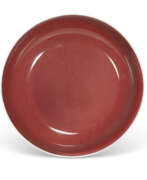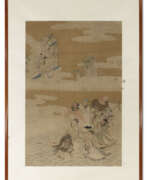Qing Dynasty

Qing Dynasty
The Qing Dynasty was the last imperial dynasty of China, ruling from 1644 to 1912. This period marked an era when art and government were intertwined, demonstrating the dynasty's distinct cultural and political identity. The Manchus who founded the Qing Dynasty not only expanded their empire to all of China, but also adopted and developed Chinese cultural traditions.
During the reigns of emperors such as Kangxi and Qianlong, the Qing Dynasty saw a remarkable fusion of artistic styles. The court became a patron of the arts, nurturing talent and setting up workshops to create exquisite paintings, sculptures and other art forms. These workshops created artworks ranging from lacquerware and jade to intricate porcelain and textiles.
One of the most notable figures in Qing art was Giuseppe Castiglione, also known as Lang the Shining. An Italian Jesuit missionary, Castiglione's work epitomized the Qing aesthetic, combining Western realism with traditional Chinese techniques. His paintings, such as Emperor Qianlong as Manjushri, are known for their hybrid style, combining European perspective with Chinese brushwork.
The cultural prowess of the dynasty extended beyond painting. Imperial workshops in Beijing, often under the direction of Emperor Kangxi, produced some of the most magnificent porcelain ever created. This porcelain, often made for imperial use, was also exported, reflecting the dynasty's interaction with the West. In addition, the dynasty's architecture, such as the Yuanmingyuan Garden, reflected the blending of Chinese and European styles.
The Qing era, especially in the eighteenth century, was marked by political stability and economic prosperity. However, the 19th century saw the onset of difficulties, including the Opium Wars and internal rebellions that led to the fall of the dynasty in 1911.
Today, the art and cultural heritage of the Qing Dynasty continues to fascinate collectors and experts. Museums around the world, such as the Freer Gallery of Art and the National Palace Museum in Taipei, house many of these historical masterpieces, providing a glimpse into this influential era.
For collectors and lovers of art and antiques, the Qing Dynasty is a treasure trove of objects, each with its own story reflected in history. If you want to learn more about this fascinating era and its artistic achievements, sign up for updates. You will receive exclusive news about merchandise sales and auctions related to Qing Dynasty artifacts. This subscription is your way to own a piece of history.
| Country: | Asia, China |
|---|---|
| Start of the period: | 1644 |
| End of the period: | 1912 |







